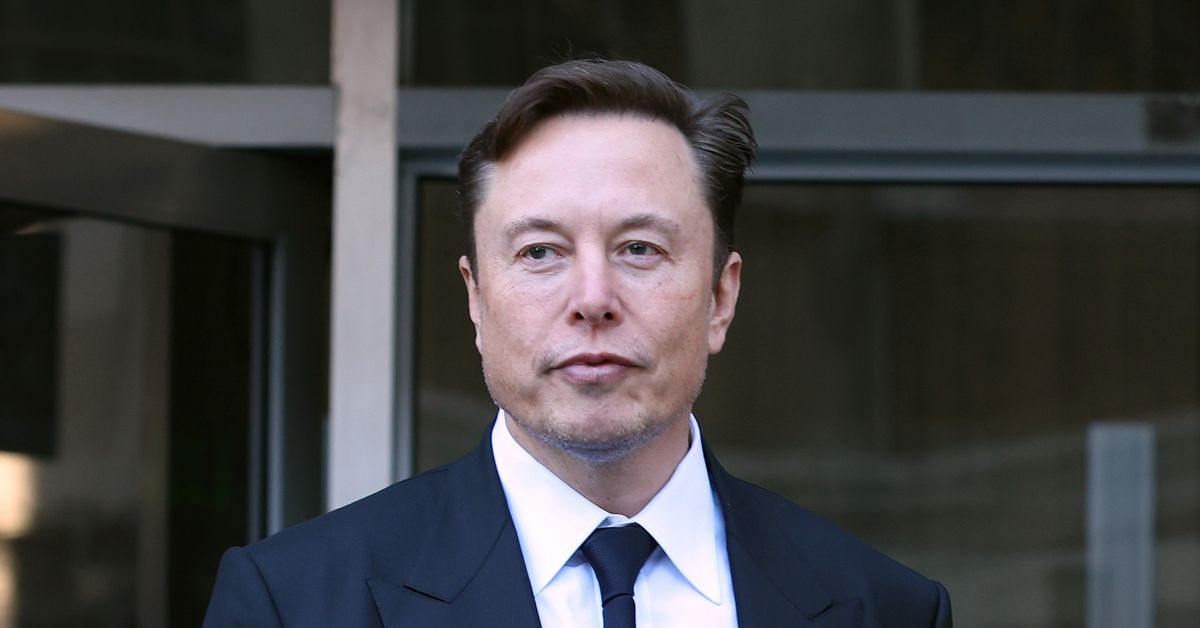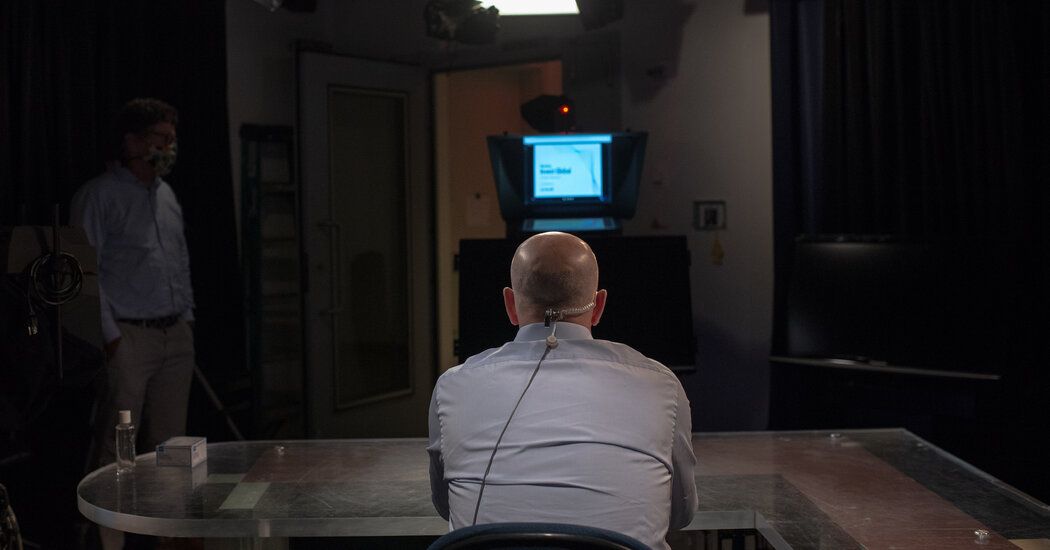Elon’s blue check disaster is getting worse
Elon Musk’s decision to strip certain users of their legacy verification check marks — one of the biggest changes he’s made as the new owner and CEO of Twitter — is off to a chaotic start.
Twitter’s iconic blue check marks were once status symbols of internet clout. Now, they’ve turned into a mark of shame for many celebrities.
Last week, Musk started taking away the check marks from the Twitter profiles of users who used to get them for free, including celebrities, journalists, and politicians. Many prominent figures refused to pay. Then, Musk started somewhat inexplicably gifting them back to some celebrities. That meant that celebrity accounts were mixed up with Twitter Blue subscribers, many of them trolls and Elon fans, which led to even more confusion.
“Despite the implication when you click the blue badge that has mysteriously re-appeared beside my name, I am not paying for the “honour,”’ actor Ian McKellen tweeted on Saturday.
In the past, influential figures like McKellan were given check marks for free after verifying their identities with Twitter, so that users would know that these public figures really were who they said they were and not imposters. Musk criticized the old way as an elitist “lords” and “peasants” system, and instead vowed to let anyone get a check mark if they paid for a monthly Twitter Blue subscription, which gets you verified as well as other features like the ability to edit tweets, write tweets with more than 280 characters, and get your tweets to come up first in search results and reply rankings.
“Power to the people! Blue for $8/month.” Musk tweeted on November 1, his first official day as the new CEO of Twitter.
But the problem with Musk’s pay-to-play check mark scheme is that, so far, not enough people are willing to pay. So instead, just like it used to, Twitter is giving away check marks for free to important people — except this time, some of those celebrities don’t want the check mark anymore.
Having a blue tick now means theres a higher chance that you're a complete loser and that you're desperate for validation from famous people. https://t.co/OGiW2xtgRV — DOJA CAT (@DojaCat) April 11, 2023
In the past few days, A-listers including LeBron James, Chrissy Teigen, and Lil Nas X said that they had check marks even though they weren’t subscribing to Twitter Blue (Teigen’s check mark has since been removed). The company is even giving check marks away to deceased celebrities, including Kobe Bryant and Anthony Bourdain. And many of the users who actually are paying for Twitter Blue have exploited their newfound check marks to impersonate accounts like Disney and the New York City government (Twitter later suspended the accounts), causing a major misinformation problem.
Musk confirmed on Friday that he was personally paying for check marks for three accounts: LeBron James, William Shatner, and Stephen King — all of whom publicly sparred with Musk over the program. But the number of celebrity exceptions that Musk is dishing out may be far bigger than that. It appears that a majority of accounts with over 1 million followers still have a check mark as of early this week, even if they’re not subscribing to Twitter Blue.
All of this is evidence that Musk’s updated check mark system is a mess. Since changing the way verification works on Twitter is one of the most visible changes Musk has made to the platform so far, the debacle casts doubt on the billionaire’s stated commitment to treating celebrities and regular users equally, as well as on his ability to turn Twitter into a profitable business. After all, Musk has long said that the subscription income would be a key revenue stream that would help pull Twitter from the brink of bankruptcy as advertisers have left the platform since Musk took over, although so far, the math on subscribers doesn’t check out.
“What can I say? It’s a goat rodeo,” Kara Swisher, host of the Vox Media podcasts On With Kara Swisher and Pivot, said in a text in response to a question about the Twitter check mark-removal debacle.
Why people don’t want a check check mark, and could even try to sue over it
Swisher is one of the many notable figures on Twitter who still has a check mark despite not paying for one. Although she used to pay for Twitter Blue under the “old regime,” she says she canceled her subscription because she found its “features wanting.” As of last week when Musk started removing checkmarks, only about 4.8 percent of legacy verified accounts had signed up for Twitter Blue, according to independent researcher Travis Brown.
If Twitter’s paid verification product is going to become the killer product for Twitter that Musk has touted it to be, he’s going to need more people to pay.
Of course, subscription programs themselves aren’t controversial. All kinds of companies — from Amazon to YouTube — offer premium tiers that give you additional or better features. And normally, these companies actively court their customers, nudging free users to become paid ones with special promotions and targeted marketing.
Musk went about his business plan in a different way. He publicly sparred with members of Twitter’s base of “check marked elite” power users, like the media and celebrities who criticized his program.
We need to pay the bills somehow! Twitter cannot rely entirely on advertisers. How about $8? — Elon Musk (@elonmusk) November 1, 2022
Many prominent writers, entertainers, and other creative types criticized Musk’s plan, arguing that they were providing Twitter free engaging content and that Twitter should be paying them for their contributions, not the other way around. Musk didn’t seem to care. At one point, he tweeted at “complainers” to “please continue complaining, but it will cost $8.”
Musk agitated one particularly important group of Twitter power users who help keep the platform buzzing: journalists. Musk banned prominent reporters for “doxxing” him, feuded with public media like NPR and the BBC over “state-affiliated media” labels, and made fun of legacy media institutions like the New York Times.
So it came as no surprise when major newsrooms, including the New York Times, the Washington Post, and Politico, announced that they would not be paying for their organizations or journalists to use Twitter Blue. LA Times’s management said — perhaps rightfully so — that verification “no longer establishes authority or credibility.”
In the past few months, we’ve seen that many of the kinds of accounts subscribing to Musk’s Twitter Blue plan are those that align with the billionaire’s personal brand: Tesla fans, crypto enthusiasts, and, increasingly, conservatives. Having Twitter Blue now is seen by some as a tacit endorsement of Musk and his politics.
“I think the reason people don’t want the check mark is because of the association with people who do have the check mark now,” said Gizmodo journalist Matt Binder, who has written about the “Block the Blue” campaign, which involved a handful of prominent Twitter users collectively blocking people who pay for Twitter from their timelines. After Binder wrote about the campaign, he and a member of the Block the Blue campaign, popular Twitter user “dril,” received a free and unwanted Twitter check mark. Binder believes this was out of spite.
The new checkmark system isn’t just confusing or annoying; it could also cause legal issues. A celebrity who received a check mark against their will could, for example, argue that the check is a false endorsement that misleads consumers, according to Alexandra Jay Roberts, a professor of law and media at Northeastern University.
“I wouldn’t be too surprised to see a suit like that,” said Roberts, although she cautioned that any legal case wouldn’t necessarily be a “slam dunk.”
Whether or not this turns into a legal case, it’s a public embarrassment for Musk that celebrities with millions of followers are running away from the check marks that have become a symbol of the new Twitter.
The check mark impersonation problem
Twitter’s chaotic Twitter Blue program goes beyond celebrity drama. It’s also allowing the spread of potentially dangerous misinformation by giving a badge of authenticity to impersonators.
With Twitter’s old verification system, people had to take certain steps to prove that they were who they said they were. Usually, that meant showing some form of valid government-issued identification or proving employment with a participating media company. Under Musk’s new system, all you have to do is provide a credit card and phone number. Twitter says it checks for impersonators, but many fakers have slipped through the cracks.
Late last week, for example, a fake account with a check mark provided through a Twitter Blue subscription posed as a Sudanese army official and falsely reported the death of military leader Mohamed Dagalo. The tweet reportedly got over 1 million views before the account posting it was taken down. Sudan is in the middle of an active and violent military conflict.
That’s just one particularly dangerous example of a dangerous impersonator with a check mark. There were also several verified fake accounts posing as New York Mayor Eric Adams and Chicago Mayor Lori Lightfoot, with one account falsely claiming the closure of a major thoroughfare. Another verified account impersonating author JK Rowling went viral by posting a fake apology note to the transgender community.
While some of these examples have clearly lower stakes than others, it’s easy to see how if Twitter continues to verify and endorse fake accounts with a check mark, it could lead to mass confusion with potentially grave consequences, particularly when the impersonation involves government leaders.
It’s still relatively early days in the massive social experiment Musk is running with his check mark removal plan. And he still has time to turn things around. Meanwhile, millions of people are still using Twitter, though we don’t have an exact number since Twitter, no longer a public company, doesn’t have to report these metrics. There are even some celebrities who complained about the new check marks who are still using the platform.
But if Twitter’s quality as a service continues to degrade, it may be a matter of time before more people leave the platform — check marked or not.
Source: Vox.com


